When you’re building a new home, one of the most important decisions you’ll make is what kind of framing to use. Steel or wood? Both have their pros and cons, but which is the better choice for you? In this blog post, we’ll take a look at the differences between steel and wood framing, and help you decide which is right for your new home build!
Steel Stud Basics

Steel framing is stronger than wood framing, so it can better resist high winds and other severe weather conditions. Steel studs are also non-combustible, so they offer better protection against fire. And because steel doesn’t rot or attract termites, it’s a more durable option than wood for framing your home.
So why isn’t everyone building with steel? Well, steel studs do have a few drawbacks. For one thing, they’re more expensive than wood studs. They’re also harder to work with, so you’ll need special tools and training to use them. And because steel conducts heat and cold well, it can make your home less energy-efficient if not properly insulated.
Still, steel framing has some clear advantages over wood. If you’re building in an area that’s prone to high winds or other severe weather conditions, steel studs are a good choice. And if you’re looking for a more durable option that will better resist fire and termites, steel is the way to go. [1]
Standard Sizes Of Steel Studs
The most common steel studs are made from cold-formed steel. They come in a variety of sizes, but the most common width is two inches. The standard lengths are eight, ten, and twelve feet. Most hardware stores will carry these sizes, but you can also special order them if you need a different size.
How To Cut Steel Studs
You’ll need a few specialized tools to cut steel studs. A circular saw with a metal cutting blade will work, but it’s not the best option. A better choice is an angle grinder with a metal cutting wheel. You can also use a plasma cutter, but that’s overkill for most home projects. Whichever tool you choose, make sure you wear safety gear, including gloves, a respirator, and eye protection. [2]
Pros And Cons Of Using Steel Studs
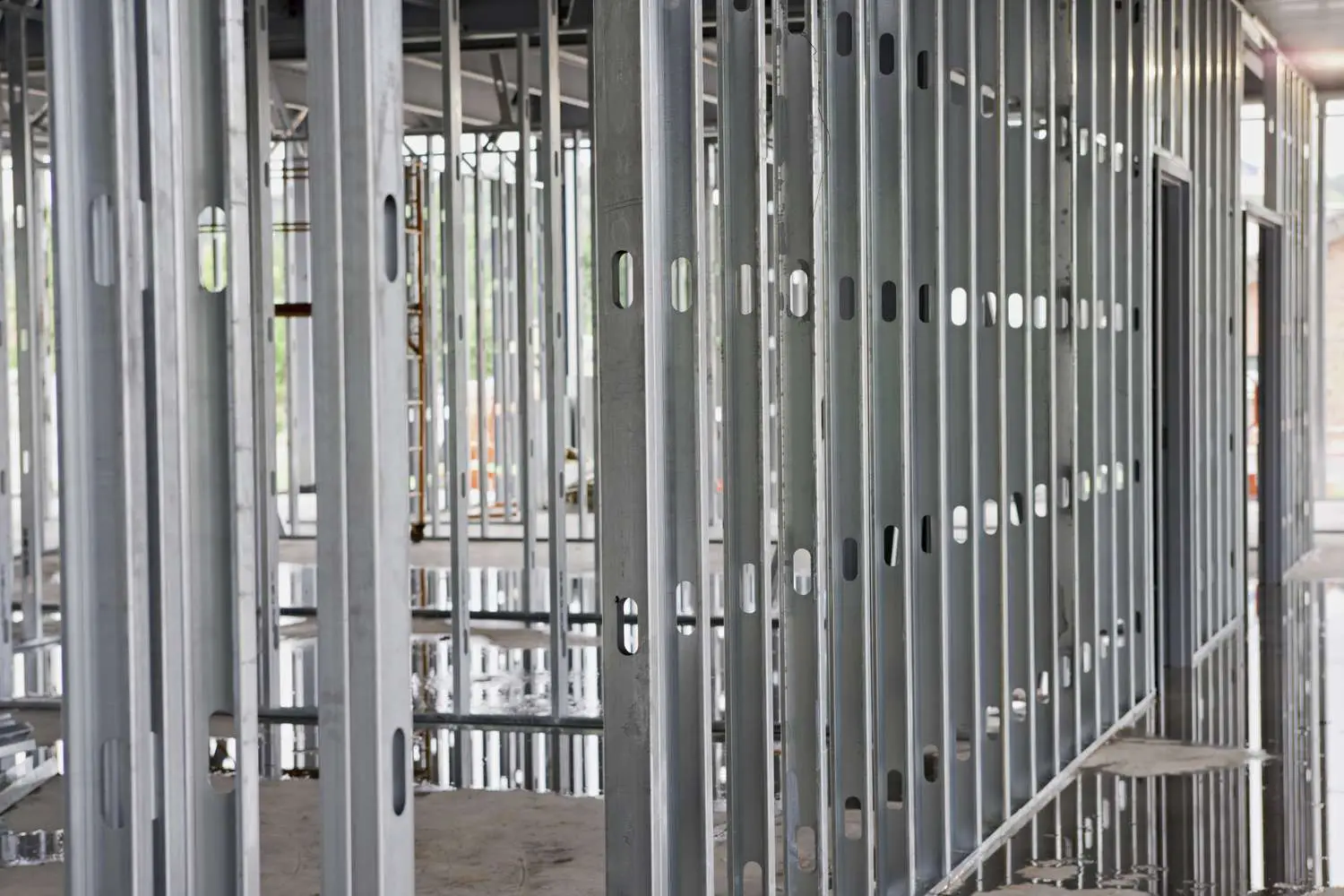
Pros
Predictable
Steel is a known quantity. You can expect it to behave in a certain way, which makes planning and execution easier. There are no surprises with steel.
Durable
A well-built steel frame home will last longer than a wood frame home. The materials are more resistant to rot, insects, and fire.
Low Maintenance
Because steel doesn’t rot or attract pests, there’s very little you have to do to maintain it. This can save you time and money in the long run.
Cost-Effective
Though the initial cost of steel framing may be higher than wood, you’ll save money in the long run due to the lower maintenance costs.
Lightweight
Steel framing is much lighter than wood, which makes it easier to work with and less likely to cause structural problems. [3]
Good For Problem Areas
Areas that are prone to high winds, earthquakes, or other natural disasters will fare better with steel framing.
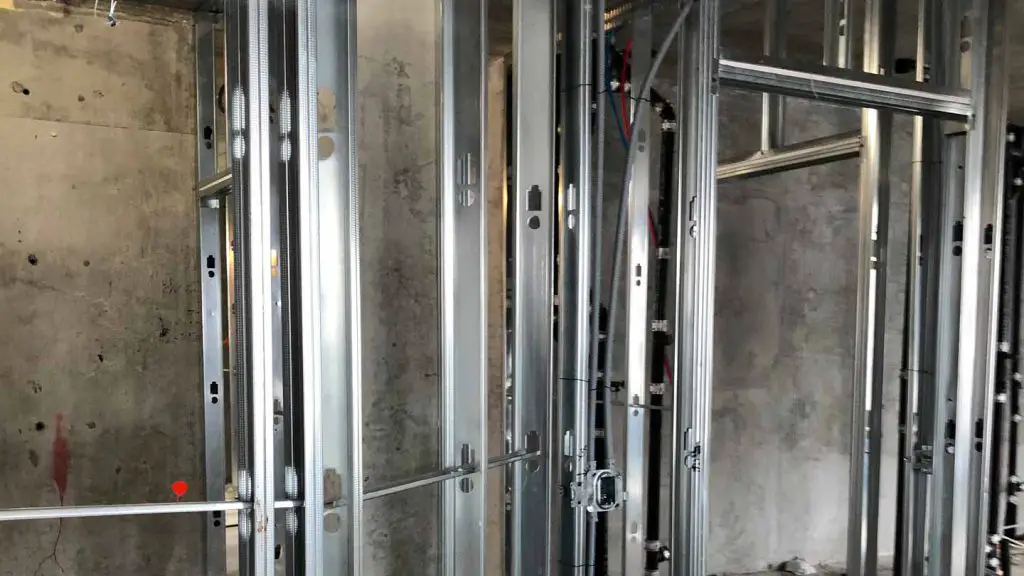
Cons
Difficult To Cut And Drill
Steel is much harder to cut and drill than wood, which can make working with it more difficult. You’ll need specialized tools and training to work with steel.
Corrosion
While steel framing is more resistant to rot and pests than wood, it’s not immune to corrosion. If you live in an area with high humidity or salt air, your steel frame may corrode over time.
Noisy During Construction
Because steel is so hard, it tends to be noisy when being cut or drilled. This can be a nuisance during construction.
Limited Availability
While steel framing is becoming more popular, it’s still not as widely available as wood. This can make it difficult to find the materials and qualified contractors you need.
Limited Creativity
Because steel is so rigid, it can be difficult to create custom designs. This can limit your creativity when planning your home.
Drywall Installation Is Tricky
Installing drywall on steel framing can be tricky, as the screws have a tendency to spin and strip out. You may need to use special screws or fasteners to get a good grip.
Types Of Structural Steel Framing Systems
When it comes to steel framing for homes, there are three main types of systems: plate girders, trusses, and open-web joists.
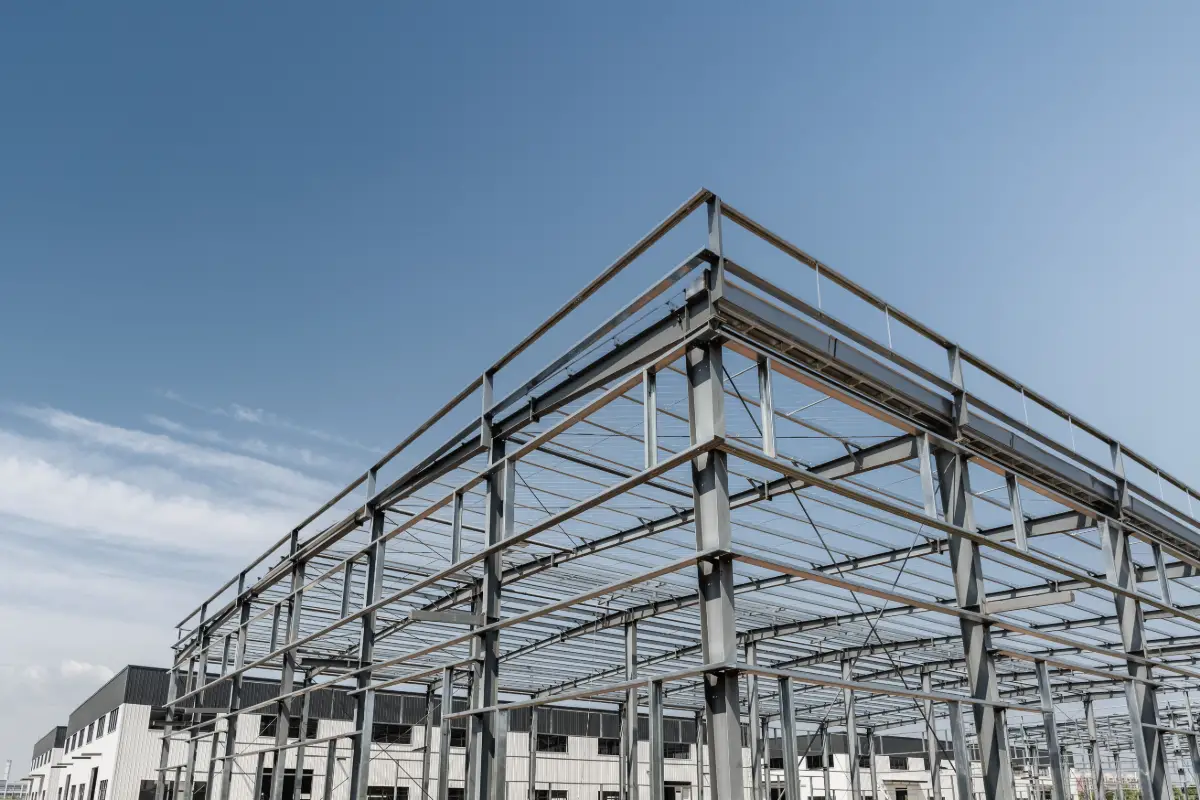
Plate girders are the most common type of steel framing used in residential construction. They consist of two or more plates that are fastened together with rivets or bolts to form a beam.
Open-web joists are beams with an open web structure that allows them to be lighter and less expensive than other types of steel framing. [4]
Wood Framing Basics
Wood framing is the most common type of framing used in residential construction. Wood framing consists of vertical and horizontal members, called studs and joists respectively, that are covered with sheathing (plywood or oriented strand board). The studs and joists are fastened together with nails, screws, or bolts.
The main advantage of wood framing is that it is relatively inexpensive compared to other types of framing. Wood is also easy to work with, which makes it a good choice for do-it-yourself projects.
Another downside of wood framing is that it does not have the same structural strength as steel framing. This means that wood-framed homes are more likely to suffer damage in severe weather conditions, such as hurricanes and earthquakes. [5]
What Type Of Wood Is Used For Framing?
There are many different types of wood that can be used for framing a house. The most common type of wood used in North America is softwood, which is typically found in the form of lumber. Other popular choices include hardwoods, engineered woods, and even recycled woods.
Pros And Cons Of Using Wood Framing
There are a few key advantages to using wood framing for your home. First, wood is an environmentally friendly material. It’s a renewable resource, so it doesn’t put strain on the environment the way that steel does. Second, wood is cheaper than steel. It’s a more affordable building material, so it can help you save money on your construction project.
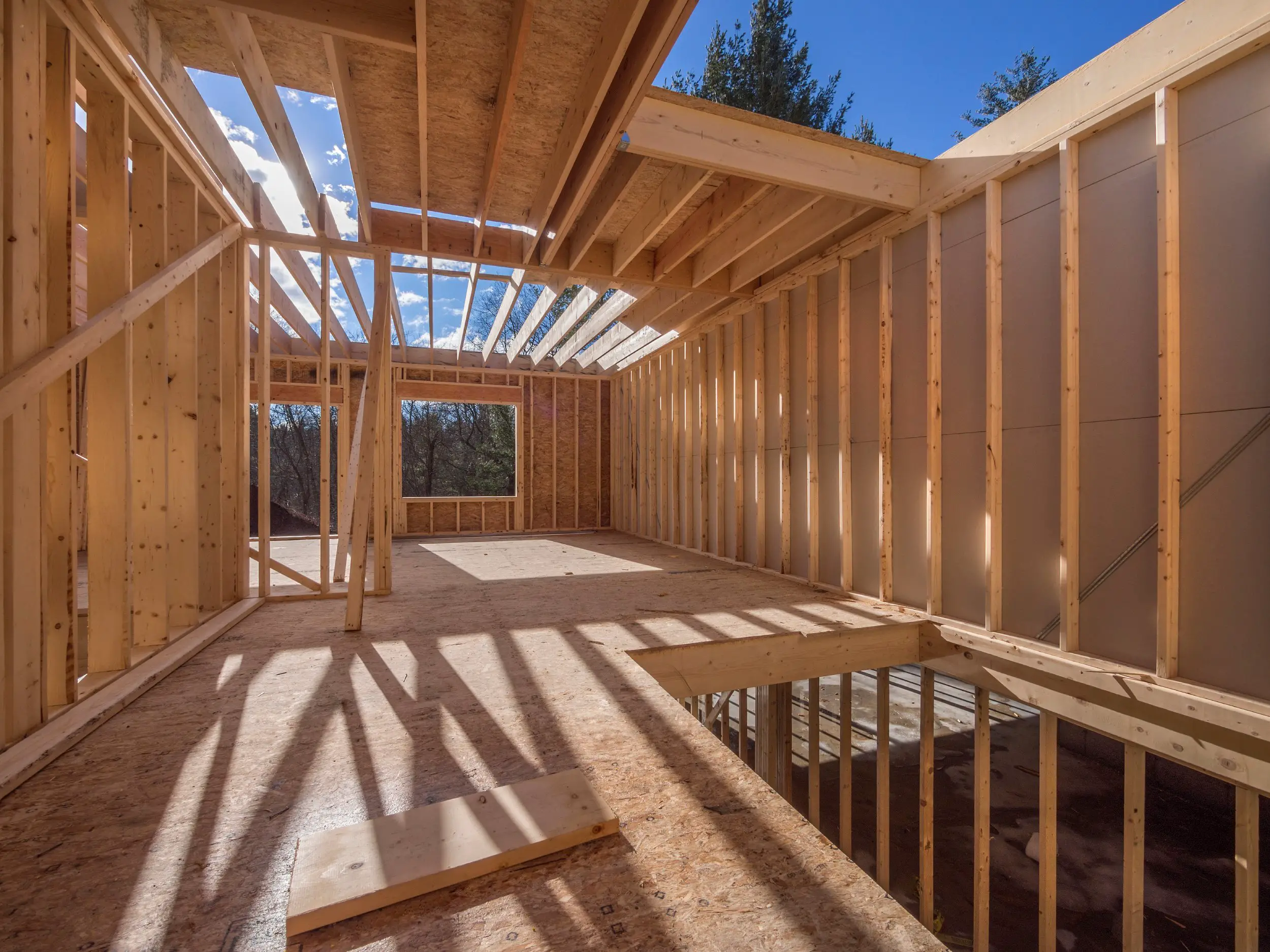
However, there are also some drawbacks to using wood framing. One of the biggest disadvantages is that wood is susceptible to fire and pests. If your home is made with wood framing, it will be more likely to catch fire and be damaged by insects than a home made with steel framing. Additionally, wood can rot and warp over time, which can lead to structural problems.
Types Of Wood Framing
There are three types of wood framing that are commonly used in construction:
- Platform framing: This is the most common type of wood framing. It involves building the walls one story at a time, with each story being built on top of the previous one.
- Balloon framing: Balloon framing is less common than platform framing, but it is still used in some construction projects. It involves building the walls from bottom to top, with all of the studs being attached to the top plate.
- Post and beam: Post and beam construction is not as common as the other two methods, but it has its advantages. In this method, the beams are the structural elements that bear the weight of the house, while the studs are used for attaching the walls to the beams.
How Much More Expensive Is Steel Framing?
The average cost to frame a house with steel is about 20% more than framing a house with wood. However, the initial investment is quickly made up for in the long run, as steel-framed homes are much more durable and require less maintenance than wood-framed homes. In addition, steel framing is termite-resistant and fireproof, two very important considerations when building a home. [6]
What Is Warmer: Steel or Wood?
Another consideration when deciding between steel and wood framing is the climate in which you live. Steel frames are better at conducting heat than wood frames, so if you live in a cold climate, your home will be warmer with a steel frame. If you live in a hot climate, however, your home will be cooler with a wood frame.
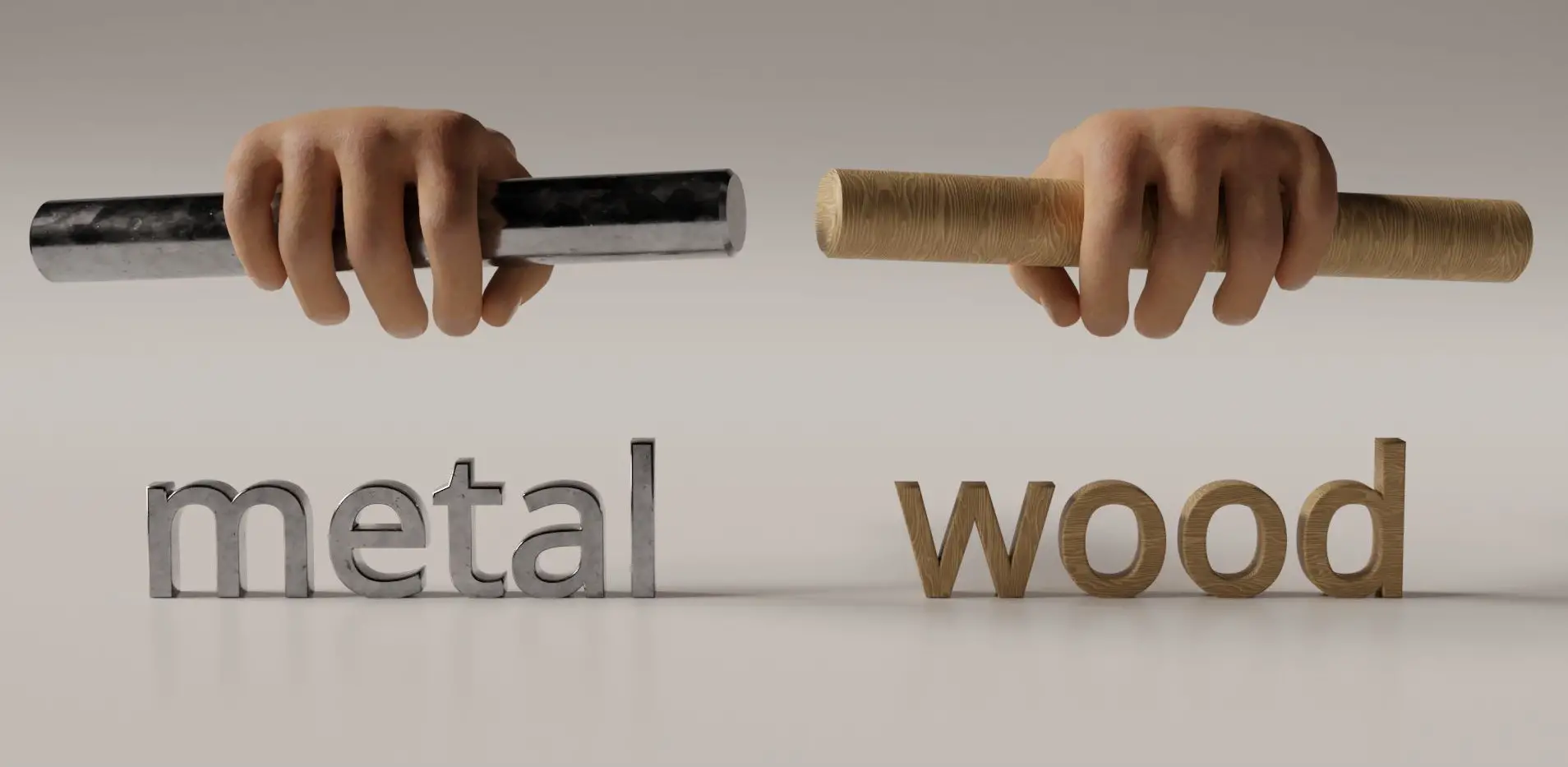
What Lasts Longer?
The debate of steel vs. wood framing for home construction is one that has been around for many years. Each type of material has its own unique set of benefits and drawbacks, making it difficult to determine which one is the best option for your specific needs.
When it comes to lifespan, steel framing definitely has the upper hand over wood. Steel frames are built to last much longer than their wooden counterparts, meaning you won’t have to worry about replacing them as often. In fact, a well-constructed steel frame can easily last upwards of 100 years with proper care and maintenance.
On the other hand, wood framing has a more limited lifespan and is subject to rot, insect damage, and other forms of degradation. With that said, wood frames can still last for many decades if they’re properly cared for – making them a viable option for those who don’t want to deal with the hassle of maintaining a steel frame.
So, which one should you choose? The answer ultimately depends on your specific needs and preferences. If you’re looking for a material that will require less maintenance over time, steel framing is probably your best bet.
However, if you prefer the natural look of wood or you’re working with a tight budget, wood framing may be the better option for you. Whichever route you decide to go, just make sure you do your research and pick the material that’s right for your home.
So, Which Is Better? Steel or Wood Framing?
The answer to this question depends on your individual needs and preferences. If you are looking for a durable, low-maintenance option that will last for decades, steel framing is the way to go. However, if you are on a tight budget and prefer the traditional look of wood framing, then wood is the better option for you. Whichever route you choose, make sure to work with a reputable contractor who has experience framing both steel and wood homes.
FAQ
What is the best material for framing a house?
There is no one-size-fits-all answer to this question, as the best framing material for a home depends on a number of factors. These include the climate in which the home will be built, the design of the home, and the budget of the homeowner. However, two of the most popular materials used for framing homes are steel and wood.
What are the disadvantages of a steel frame house?
While steel framing has a number of advantages, there are also a few disadvantages to consider. One of the biggest disadvantages is that steel is susceptible to corrosion, which can shorten its lifespan. Additionally, steel framing is more expensive than wood framing, and it requires special training and tools to install.
What are the benefits of a wood frame house?
Wood framing has been used for homes for centuries, and there are several reasons why it remains a popular choice today. Wood is an environmentally-friendly material, and it’s also strong and durable. Additionally, wood is easy to work with and relatively inexpensive.
Are steel framed houses cold?
One of the benefits of steel framing is that it creates a very tight seal, which can help to keep homes warm in cold climates. Additionally, steel framing does not expand and contract like wood framing, so it’s less likely to develop cracks and gaps over time.
Why are houses built with wood instead of metal?
The most common answer is that wood is cheaper than steel. But if you’re looking at the long-term costs, wood framing may not be the best choice. Steel framing is more durable and will last longer, meaning you won’t have to replace it as often. Another factor to consider is the weight of the materials. Wood is much lighter than steel, so it’s easier to work with during construction. This can save on labor costs.
Is a steel frame house cheaper than wood?
The initial cost of a steel frame house is higher than a wood frame house. But when you factor in the long-term costs, steel framing is often the cheaper option. Steel frames are more durable and will last longer, so you won’t have to replace them as often. This can save you money in the long run. So, what’s the better choice? It depends on your needs and budget. If you’re looking for a durable frame that will last for decades, steel framing is the way to go. But if you’re working with a limited budget, wood framing may be the better choice.
Ultimately, the decision comes down to your personal preferences and needs.
Does steel last longer than wood?
The answer to this question is not as straightforward as you might think. While steel does have a higher initial cost than wood, it also has a longer lifespan. In fact, steel framing can last up to four times longer than wood framing. So, if you are looking for a material that will last longer and require less maintenance over time, steel is the better choice. However, if you are working with a limited budget, wood may be the more affordable option for you.
What about strength?
When it comes to strength, steel is again the clear winner. Steel framing is much stronger than wood framing and can better withstand high winds and other severe weather conditions. If you live in an area that is prone to hurricanes or other natural disasters, steel framing is the best option to keep your home safe.
What about fire resistance?
Another area where steel outperforms wood is in fire resistance. Steel framing is non-combustible, which means it will not catch fire in the event of a house fire. Wood framing, on the other hand, is combustible and can quickly be consumed by flames. If you want to protect your home and family from the risk of fire, steel framing is the way to go.
Useful Video: Metal or Wood Framed Home – Which To Chose?
Conclusion
So, which is better? In short, it depends. If you’re looking for a more affordable option, wood framing may be the way to go. However, if you’re concerned about the environment or want a material that will last longer, steel framing could be the better choice for you.
Ultimately, the decision comes down to personal preference and your budget. Whichever route you choose, make sure to do your research and consult with a professional before making any final decisions.
Do you have experience with steel or wood framing? We’d love to hear about it in the comments below!
References
- https://www.thespruce.com/reasons-to-reconsider-steel-studs-1822847
- https://www.familyhandyman.com/project/using-steel-studs/
- https://www.jlconline.com/how-to/framing/q-a-weight-of-steel-vs-lumber-beams_o
- https://www.constrofacilitator.com/different-types-of-structural-steel-framing/
- https://sherwoodlumber.com/top-benefits-of-wood-framing-over-steel/
- https://www.angi.com/articles/why-use-steel-frame-house.htm





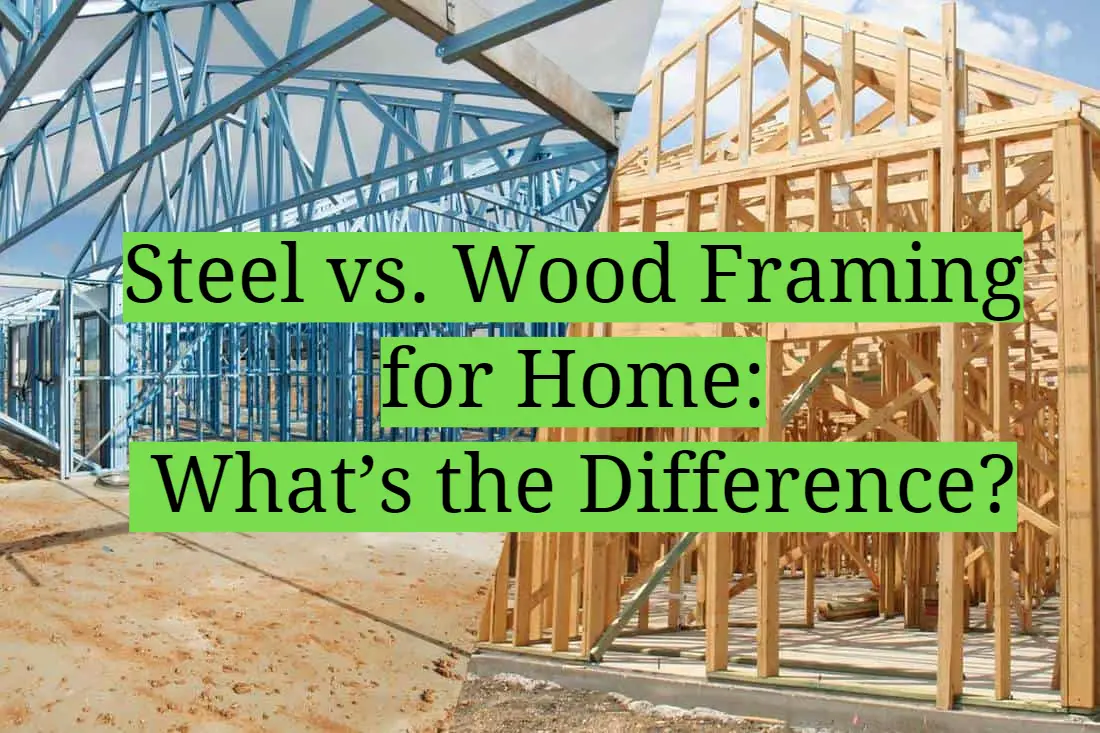




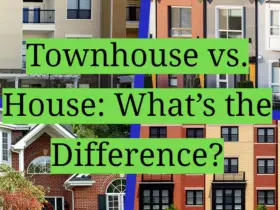


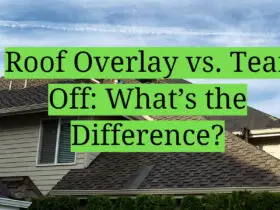
Leave a Reply